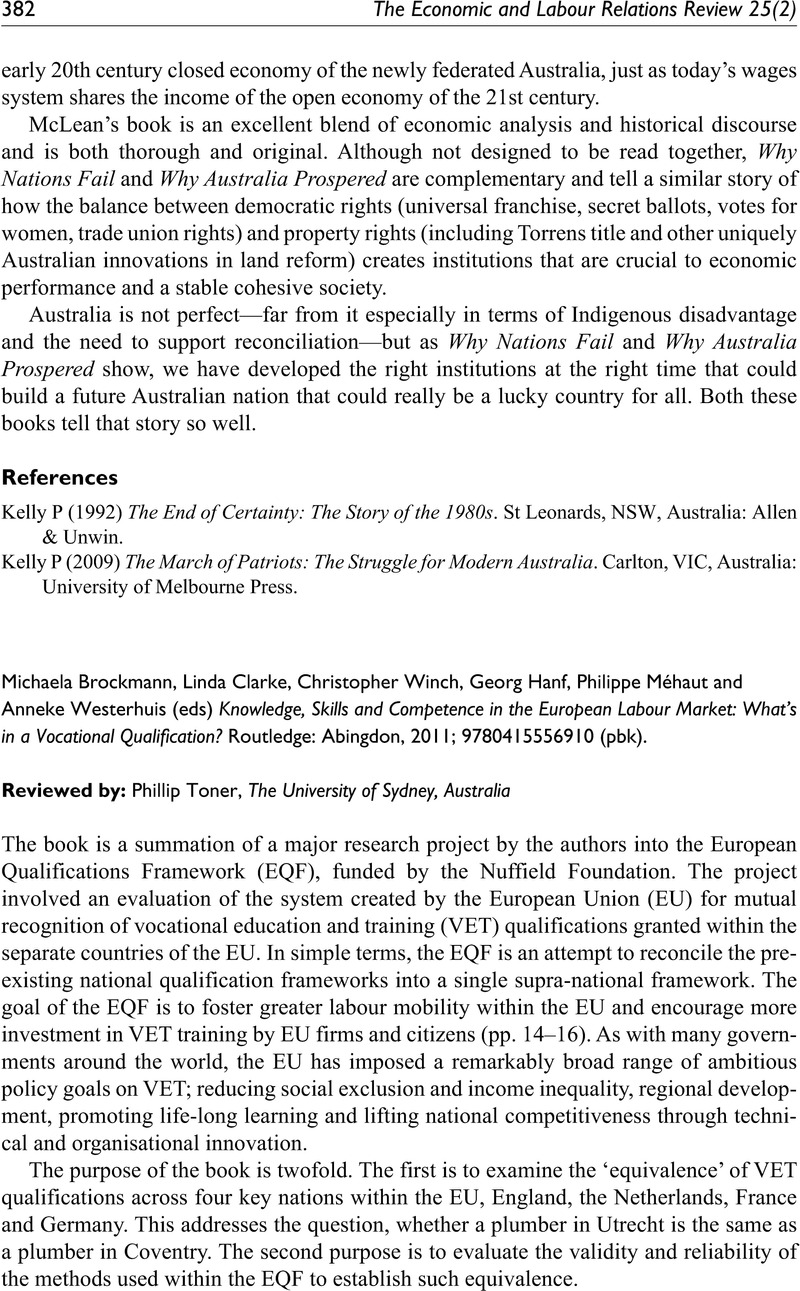No CrossRef data available.
Article contents
Michaela BrockmannLinda ClarkeChristopher WinchGeorg HanfPhilippe MéhautAnneke Westerhuis(eds) Knowledge, Skills and Competence in the European Labour Market: What’s in a Vocational Qualification?Routledge: Abingdon, 2011; 9780415556910 (pbk).
Review products
Michaela Brockmann Linda Clarke Christopher Winch Georg Hanf Philippe Méhaut Anneke Westerhuis (eds) Knowledge, Skills and Competence in the European Labour Market: What’s in a Vocational Qualification? Routledge: Abingdon, 2011; 9780415556910 (pbk).
Published online by Cambridge University Press: 01 January 2023
Abstract
An abstract is not available for this content so a preview has been provided. Please use the Get access link above for information on how to access this content.

- Type
- Book reviews
- Information
- The Economic and Labour Relations Review , Volume 25 , Issue 2: Symposium - Some Impacts of Neoliberalism , June 2014 , pp. 382 - 384
- Copyright
- Copyright © The Author(s) 2014
References
Clarke, L, Winch, C
(2006) A European skills framework? But what are skills? Anglo-Saxon versus German concepts. Journal of Education and Work 19(3): 255–269.CrossRefGoogle Scholar
Hall, P, Soskice, D
(eds) (2001) Varieties of Capitalism: The Institutional Foundations of Comparative Advantage. Oxford: Oxford University Press.CrossRefGoogle Scholar
Smith, A
(1776) An Inquiry into the Nature and Causes of the Wealth of Nations (Two volumes). London: W Strahan and T Cadell.Google Scholar


